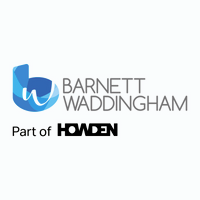Top benefits communication tips for a more personalised approach
Your benefits package is a great way to show employees you care about their wellbeing and rewards.
But is your current benefits communication strategy lacking the personal touch?
Here are my top benefits communication tips to help you create a more personalised approach:
Know your audience
Your workforce is likely to consist of various cohorts spanning different generations, backgrounds and grades.
To start off, dig deep into the data you already have and seek feedback.
This might involve collaborating with team members across the business and inviting people to take part in a short survey or focus group to capture responses.
Depending on your budget and resource, time spent gathering as much data and insight as possible into how your communications are currently landing will help you at the next stage.
Remember, the way you communicate your benefits to those at the early career stage will likely be different from how you communicate with someone approaching the end of their career.
It’s important to consider all these requirements to provide optimal engagement for each cohort.
Decide on your channels
Once you understand how your benefits communications are currently landing, you can build a strategy with a clear focus on personalisation that will resonate with your people.
You might opt for a multi-channel approach as there will likely be varying preferences across your organisation.
While your Gen Z workers (those born between 1997 and 2012) might prefer video and short-form content, your Gen X workers (those born between 1965 and 1980) might prefer emails and webinars.
Only by asking the question and analysing the data will you discover what makes your workforce tick.
You could run benefit fairs in the office or face-to-face events to further bring your benefit offering to life.
Rather than simply personalising an email with the person’s name, be prepared to adapt wording so it’s relevant to various audiences.
Deliver with impact
To deliver with impact, you should talk or write in the first person to create a conversational tone of voice.
Your audience is more likely to engage with communications if they believe there’s a real person at the other end.
Use universal language and avoid gender-specific terms, so benefits are communicated in a way that opens them up to all.
Check your communications for any hidden assumptions, these could appear in imagery or language and might relate to a person’s culture, background, beliefs or behaviour.
We often make assumptions without realising, so it’s important to check for these.
Write in a way that’s inclusive of those with poor literacy and numeracy skills, so nobody feels excluded.
Bear in mind the average reading age in the UK is just nine years old.
Don’t forget the design elements too. As well as using diverse imagery, include clear subheadings and high colour contrasts for those with visual impairments.
Be prepared to offer alternative communication formats if the current format isn’t suitable, for example, large font or audio transcripts.
Don’t forget to check
Once you’ve tailored your communications to reflect your diverse audience, chosen relevant channels and ensured the language, tone and design all deliver impact, it’s important to check how they’ve landed.
Regularly monitor of engagement rates, such as open and click-through rates, to help ensure you’re on track to reach your engagement goals.
You might consider getting benefit or engagement champions involved to help you understand what has worked well and where you can improve.
Actively involving people in the process shows them you care and might even highlight some benefits they weren’t previously aware of.
By making your benefits communications as accessible, personal and inclusive as possible, you’re helping to influence benefit uptake – and that’s a positive outcome for everyone.
Supplied by REBA Associate Member, Barnett Waddingham
Barnett Waddingham is proud to be a leading independent UK professional services consultancy at the forefront of risk, pensions, investment, and insurance. We work to deliver on our promise to ensure the highest levels of trust, integrity and quality through our purpose and behaviours.








